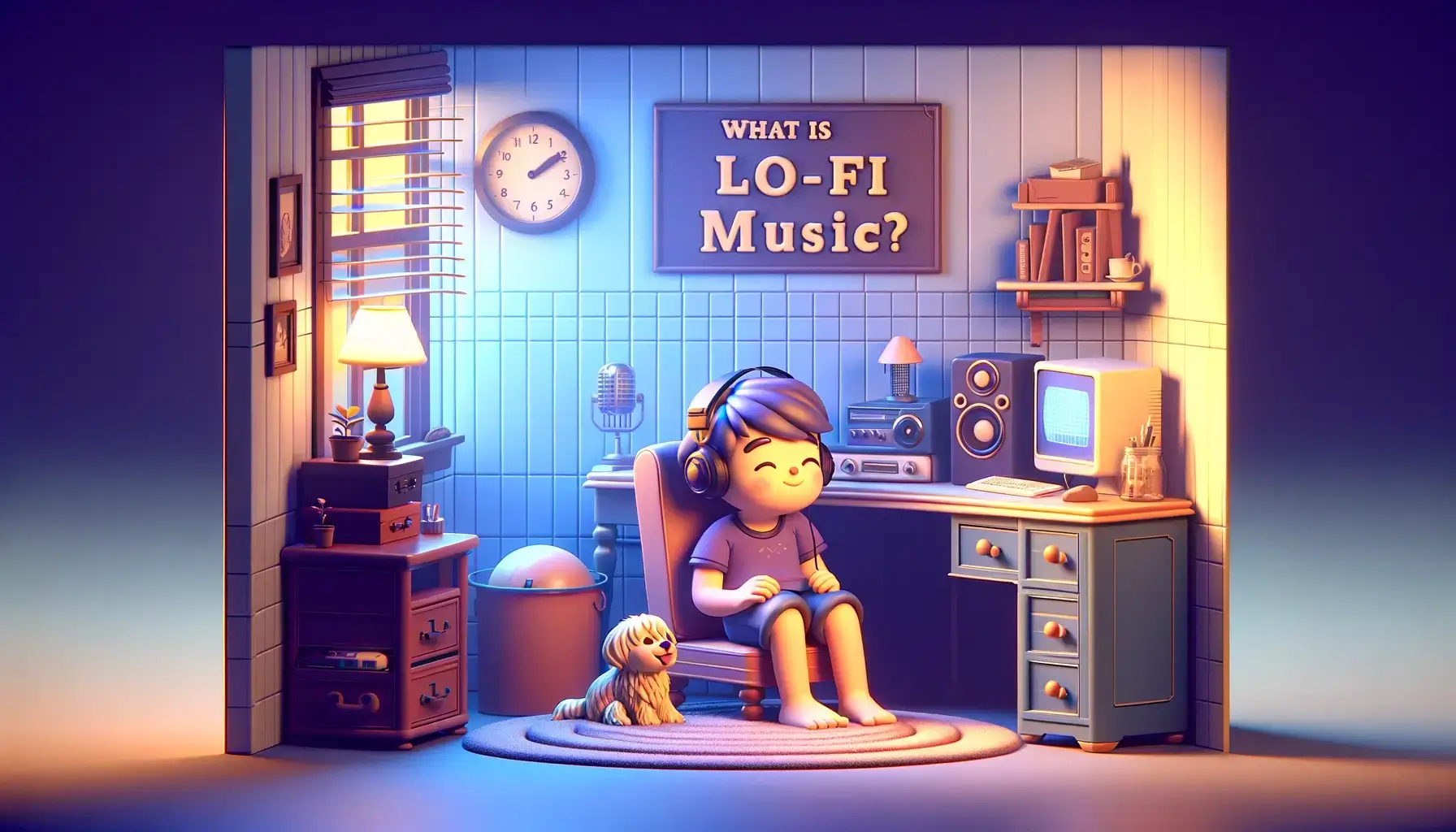Lo-Fi music, or “low fidelity” music, stands out in today’s polished musical landscape. This genre celebrates imperfections, creating a cozy, comforting ambiance.
Through mellow beats, ambient sounds, and a distinct lo-fi aesthetic, it turns background noise into a canvas of relaxation.
Lo-Fi’s charm lies not just in its sound, but in its ability to transform listening into an experience of unwinding and focusing.
Whether it’s through lo-fi hip hop or chill hop music, this genre has carved a unique niche, resonating with listeners worldwide who seek solace in its soothing rhythms.
What is Lo-Fi Music?
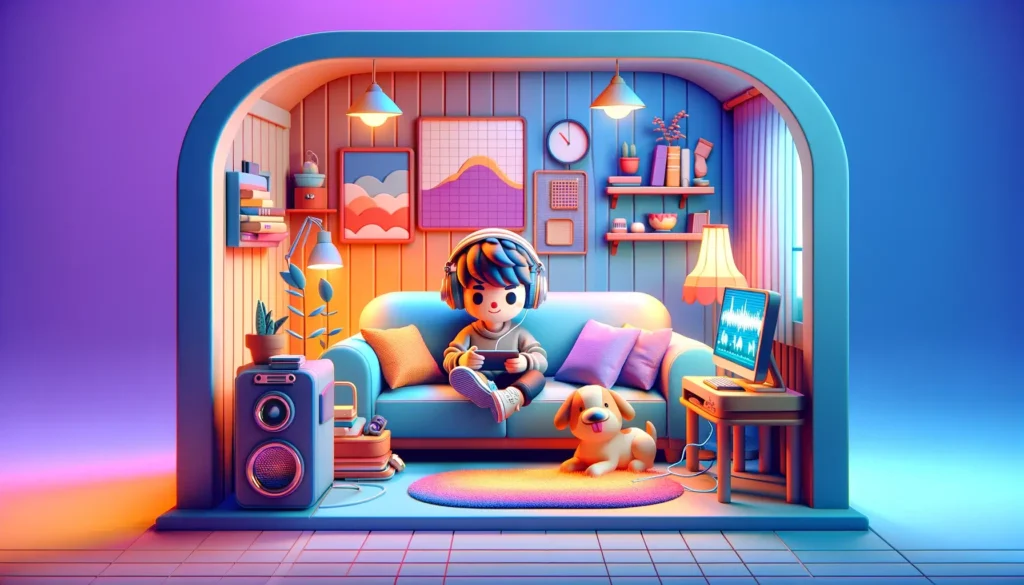
Lo-Fi music is a genre that eschews the high production values and crystal-clear sound quality of modern music for a more authentic, raw sound.
Often incorporating elements such as record scratches, misplayed notes, and ambient sounds, lo-fi music aims to create a nostalgic and relaxing listening experience.
The genre draws heavily on hip hop beats, jazz chord progressions, and electronic music elements, creating a sound that is both unique and familiar.
Characteristics of Lo-Fi Music
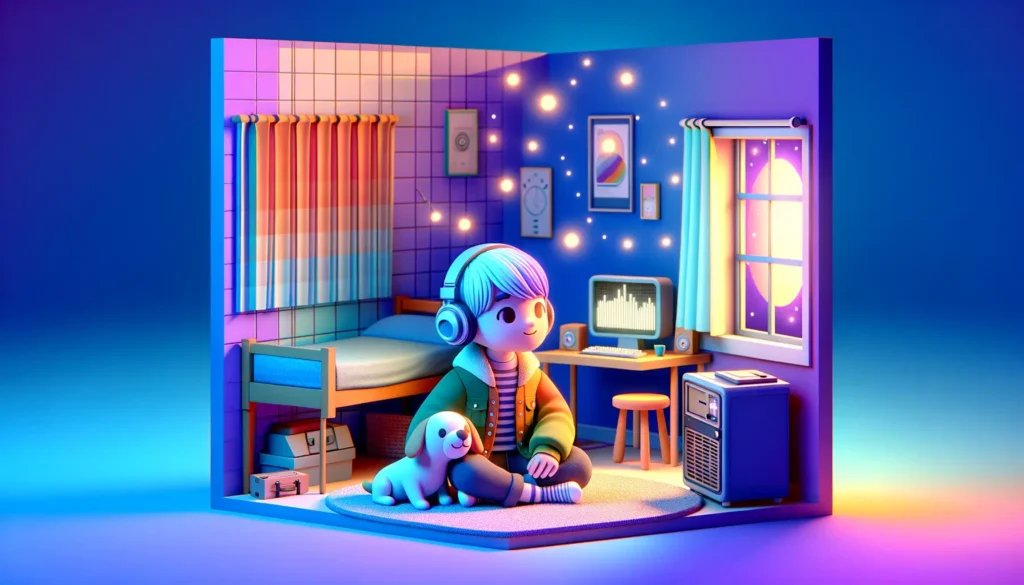
- Sound Quality: Lo-Fi music often features a “cheap sound” quality, with audio imperfections like hiss and crackle being part of its charm.
- Instruments and Beats: The use of steady rhythm, soft hip hop beats, and sometimes even vocal samples define its relaxed yet engaging tempo.
- Mood and Atmosphere: Lo-Fi music is designed to improve focus, reduce stress, and provide a comfortable background noise for studying, working, or relaxing.
The Lo-Fi Sound and Its Influences
What genre is lo-fi, you ask? Well, lo-fi music is a blend of various styles, including chill hop music and features like jazz chord progressions.
It’s known for its laid-back beats and mellow vibes, making it the perfect soundtrack for unwinding after a long day or creating a calming atmosphere.
Celebrated Lo-Fi Artists and Their Impact
Artists like Lofi Girl and MF DOOM have been pivotal in popularizing the genre.
Their tracks, characterized by laid-back beats and atmospheric sounds, have garnered millions of listens on platforms like YouTube and Spotify.
This transformation showcases the impact of key figures who contributed to Lo-Fi’s growth and its current standing in the digital age, especially on the internet.
The Impact of Headphone Choice on the Lo-Fi Experience
Open Back vs Closed Back Headphones
When immersing yourself in the lo-fi sound, the choice between open back and closed back headphones becomes crucial.
Open back headphones allow for a more natural sound, letting ambient sounds blend with the music, which can enhance the lofi experience.
In contrast, closed back headphones provide isolation, focusing the listener on the music’s intricate details without outside interference.
Both choices offer distinct advantages for lo fi listeners:
- Open Back Headphones: Ideal for home listening where external noise is minimal.
- Closed Back Headphones: Best for noisy environments or when you want to fully immerse yourself in the lo-fi soundscape without distractions.
Moreover, read our in depth article on how active noise cancellation headphones works on both the types of headphones.
History and Evolution
Lo-Fi music’s roots are deeply intertwined with DIY music culture, indie rock, and the early days of hip hop.
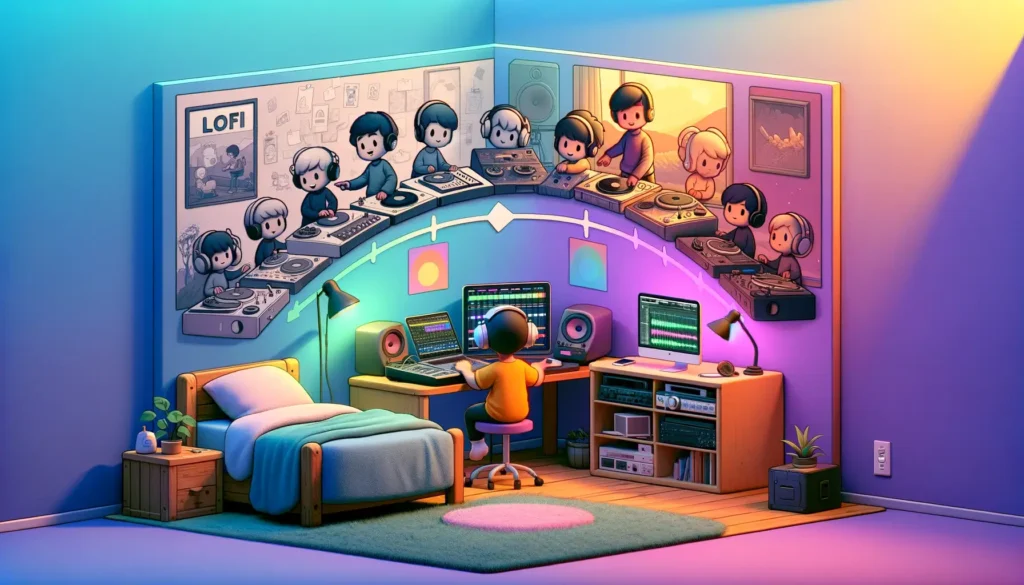
Lo-Fi music, with its embrace of imperfections and raw sound, has a rich history rooted in the rock music industry, evolving significantly through indie rock, grunge, and hip-hop.
Its evolution from low-budget home recordings to a beloved genre speaks volumes about its appeal. Key moments include:
- Early Beginnings: Starting with inexpensive equipment and cassette tapes, lo-fi was more a necessity than a choice.
- Rise of Hip Hop: Sampling and boom bap beats influenced the genre significantly.
- Internet Era: Platforms like YouTube facilitated a global spread, with channels dedicated to lofi music live streams becoming wildly popular.
While Lo-Fi music frequently embraces the distinctive sound textures that less refined equipment can impart, choosing the right type of microphone can greatly contribute to the desired outcome.
The Role of the Internet and YouTube
The digital era, particularly platforms like YouTube and Spotify, has played a pivotal role in the proliferation of Lo-Fi music
Notable examples include the Lofi Girl channel, which has become synonymous with the genre, offering endless lo-fi playlists that enhance study sessions, de-stress routines, and provide a soothing backdrop for millions worldwide.
The COVID-19 pandemic saw a surge in the genre’s popularity as people worldwide sought comforting background music for work and study from home.
Channels like Lofi Girl, which began as ChilledCow, epitomize this trend, amassing millions of subscribers and becoming a cornerstone of the Lo-Fi community online.
Moreover, The YouTube Culture & Trends team’s blog post about “The Rise of the Lofi Girl” offers an engaging perspective on how an always-on study-music live stream gave birth to a massive community centered around the Lofi Girl avatar.
Lo-Fi’s Influence Beyond Music
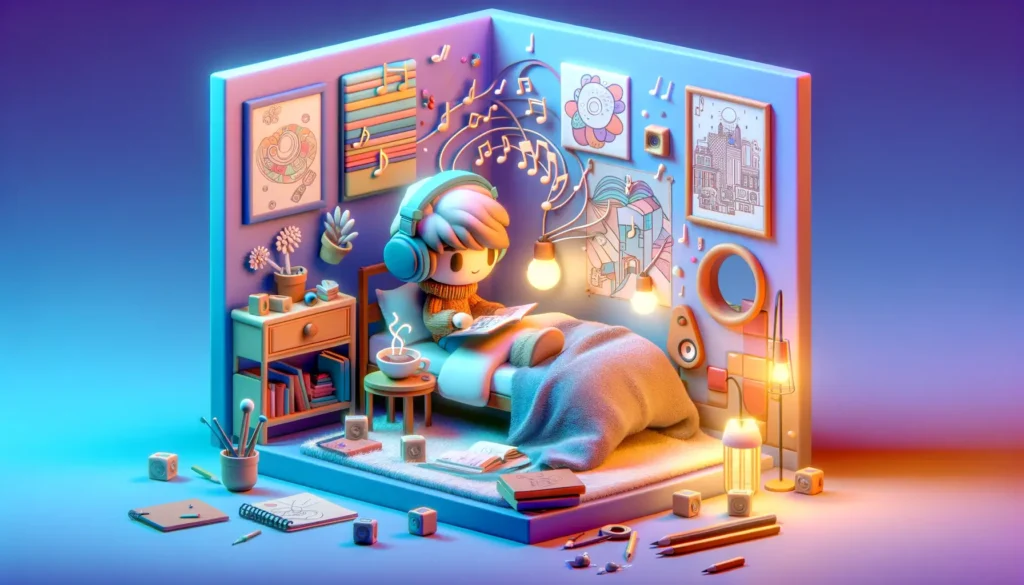
Lo-Fi music’s aesthetic, often featuring anime-inspired artwork and vintage visuals, has made a significant impact in visual arts, fashion, and lifestyle, creating a comprehensive mood or vibe that resonates with a broad audience.
Lo-Fi Music in Pop Culture
Beyond its music, lofi has seeped into pop culture through its aesthetic and ethos.
It’s often associated with visual elements like the anime-inspired artwork of Lofi Girl, creating a recognizable brand that extends far beyond the music.
Popular culture references, such as appearances in adult swim bumps or its role in creating a relaxing atmosphere for study sessions and focus-enhancing playlists, highlight its widespread appeal.
The origins of low-fidelity music
Many of the users who enjoy lo-fi music and relaxing music use it in their work or study for relaxation.
You could read this while listening to lofi playlists in front of a computer. Lo-fi music helped relieve some in a pandemic lockdown and sparked an interest in the indie music scene.
Streaming platforms like Spotify and Apple Music followed the trend and created unique playlists with a million play count.
Thousands of YouTube channels dedicated to this genre have been launched, as have livestreaming sites which promote Lo-Fi artists.
Lo-Fi music is Relaxing
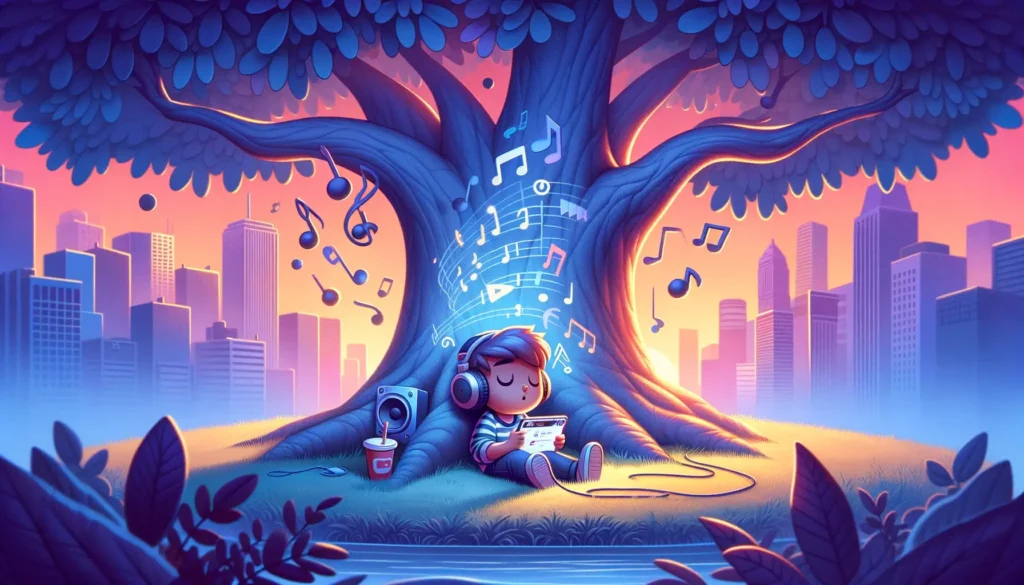
Focuses. It needs to be there, and it can be impossible at times to achieve.
Enter lofi music genres based on unpolished, rhythmic recordings similar to jazz chill-hop or repetitive beats. Lo-fi was started in the 1950s.
The band is returning recently, mainly due to its soft and small tone. Its perfect for studying, working or simply relaxing.
Lo-fi can turn an exciting space into a relaxed place to enhance your focus in whichever area is needed.
4 benefits of Lo-Fi music
Lo-fi music provides many health benefits, including:
1) Lo-Fi Music may increase brain activity
Relaxing sounding lofi music helps to stimulate creativity and thinking. This stimulates the brain’s activity and assists in problem-solving and innovating thoughts.
2) Lo-fi music may reduce anxiety and promote relaxation
Lo-Fi sounds may be beneficial in treating anxiety and depression, though not as effective as medication. Lo Fi helps reduce cortisol levels as well as calm anxiety.
3) Lo-fi music could improve concentration and keep you in the moment
If your attention span is more limited, a Lo-fi can help you. Rhythmically repetitive rhythms can help in the flow state easier.
It can also be helpful to use music in your mind for meditation exercises. The rhythm will aid you in your current moment.
Research highlighted by The Minds Journal underscores the multifaceted benefits of Lo-Fi music, from mood improvement to enhanced focus and productivity.
4) Lo-fi music may boost your mood
Music can affect our mood, and if the mood is positive, the day could be much better. Lofi’s relaxing music may bring out lighter or brighter moments.
The Future of Lo-Fi Music
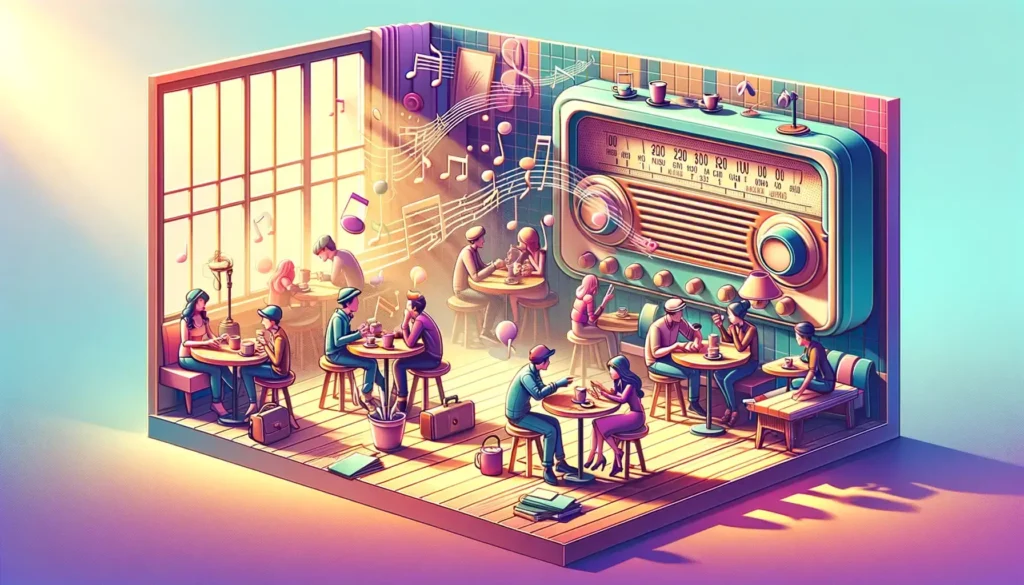
As we look towards the future, lofi music shows no signs of slowing down.
Its ability to evolve while maintaining its core elements of relaxing beats, ambient sounds, and a laid-back aesthetic suggests a bright future.
Emerging artists continue to bring innovation to the genre, while the community of listeners grows, drawn by lo-fi’s unique ability to create a tranquil space in a hectic world.
Continued Innovation and Evolution
- Technological Advances: With advancements in music production, artists have new tools at their disposal to create even more immersive lofi experiences.
- Global Influence: The incorporation of sounds and influences from genres around the world, including jazz, hip hop, and even classical music, ensures that lofi music remains dynamic and ever-evolving.
Conclusion
Lo-fi music is more than just a genre; it’s a movement that champions the beauty in imperfection and the power of music to soothe, relax, and inspire.
From its humble beginnings to its current status as a global phenomenon, lo-fi music has proven that there is a profound appetite for music that feels personal, intimate, and authentic.
As we continue to navigate the complexities of the modern world, lofi music stands as a beacon of calm, inviting listeners to take a moment to relax, focus, and find peace in the simple joys of sound.
At SoundHub, we offer expert insights and reviews to enhance your listening experience around audio and sound accessories,
FAQs
1) Why is Lo-Fi so popular?
Lo-Fi began gaining popularity as a music style in the late 1990s, when some referred to it as DIY music. Lo-Fi become very popular today because of its relaxation and specific tone.
2) What the heck is Lo-Fi?
Generally, people consider Lo-Fi a distinct musical style that values authenticity, imperfection, and a DIY spirit. Although niche sub-genres originally conceived it, Lo-Fi has become a popular genre that has influenced many genres and artists.
3) Who created Lo-Fi music?
Lo-Fi music been influenced by some incredible artists, like the Japanese legend Nujabes, often hailed as the godfather of lo-fi hip hop. You might recognize his work from the soundtrack of the anime Samurai Champloo. Another key figure in the development of lo-fi is the American rapper and producer J Dilla.


